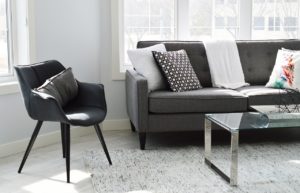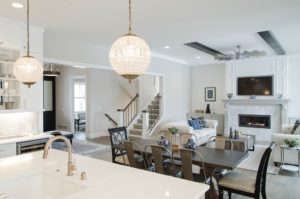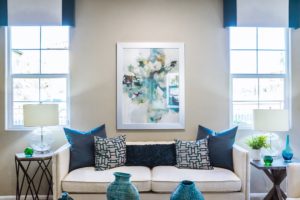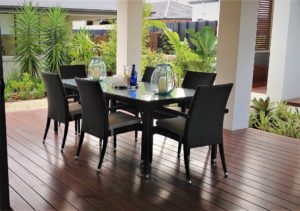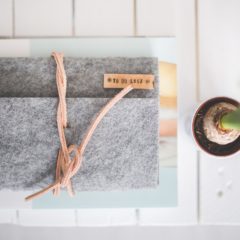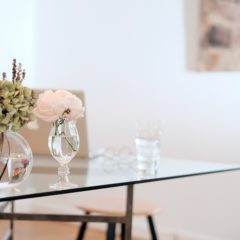Inspiration and ideas for styling your home to create beautiful spaces to enjoy. Design an aesthetically pleasing home, without the need for a generous budget. Discover new ideas for your next room makeover or renovation, plus tips on how to present your home for sale using home staging.
Discover more about styling your home for the everyday home and budget conscious.
STYLING YOUR HOME
“Your home should tell the story of who you are and be a collection of what you love” Nate Berkus – Interior Designer
- COLOUR AND TEXTURE – Once you settle on a basic colour scheme you can use it in different ways throughout each room of the house. Using a neutral colour base for large pieces of furniture allows you to make a statement with colour and pattern in soft furnishings. This way pieces won’t be competing with each other. Add pops of colour with cushions, throws and decor. Working with up to 3 colours that complement each other often works best. Add interest to a room by using a variety of fabrics, textures and patterns. Use strong colour and pattern sparingly otherwise the room could look too busy.
- STATEMENT PIECES – Create a focal point in the room with a large statement piece or oversized artwork. Position pieces in prominent places such as in the foyer or somewhere that catches your eye as you enter the living room. Make an impact with a bold colourful armchair, add drama with wall hung mirrors or start a conversation with an ornate chandelier. Create balance by sticking with accent colours throughout the room that compliment your statement piece.
- BE CONSISTENT – When styling your home try to visualise how you would like the whole home to look and feel rather than just focusing on one room. Be consistent and adopt the same style throughout. Introduce slight variations to maintain interest and keep things from looking too uniform.
- FURNITURE – When restyling a room, aim to spend the majority of your budget on good quality furniture that you love. The lesser part of your budget should go towards soft furnishings and decor. You can change out these items as the mood suits. Make sure the furniture you want to buy will sit comfortably within the space. Position furniture to allow adequate walk ways and create a free-flowing space. Try to avoid purchasing matching sets of furniture. Instead use different pieces that complement each other.
- FIND YOUR STYLE – Design trends will come and go but over time you will discover your own tastes usually remain much the same with slight variations as styles change. There are literally millions of images online these days that can assist you when it comes to styling your home. Do your research and discover which colours, styles and finishes you like and those that you don’t. Magazines, books and display homes are other great resources you can utilise. Try to complement the environment as well as the period and style in which your home is built.
HOME DECOR
“Simplicity is the keynote to all true elegance” Coco Chanel – Fashion Designer
- KEEP IT SIMPLE – Sometimes less is more and this can be true when it comes to styling your home with decor items. Having too many items on display could mean your treasured trinkets aren’t even noticeable as they become hidden away in a sea of clutter. You don’t need to have everything on display at once. Display the pieces you truly love and want to see every day. Discard or donate items you don’t really like and rotate other items.
- EXPRESS YOURSELF – Decorate with pieces that express who you are and what you love. You can do this by displaying items that you have collected during your travels and items that are important to you or tell a story about your family. Grouping items together will create more of a statement than a single piece on its own. Using odd numbers when bunching together items of similar size, shape, colour or texture is more visually appealing. Search Op shops and markets for great inexpensive decorating pieces.
- VIGNETTES – This can be a clever way to add interest when styling your home. It is essentially a small arrangement or display of items. Use a collection of items that complement the surrounding decor. Incorporate items of varying height, texture and colour. You can create vignettes throughout the house of items you cherish, such as vases, trinkets, photos, glass bottles, flowers or to showcase collections you may have.
- SHOP AROUND – Online shopping opens up a lot more opportunities to find the perfect piece to compliment your home. We are no longer bound by what the local shops offer. You can source artwork, furniture, decor items and much more from interstate and oversees online stores. This allows us to select pieces of interest and make our home different from those around us. Take your time and know what you want in order to minimise expenses and making regretful purchases. Do your research and shop around for the items you want, you may find it cheaper elsewhere.
HOME RENOVATIONS
Aspire to create beautiful and stylish spaces within your home to enjoy with family and friends.
- SET REALISTIC DESIGN GOALS – Keeping in mind the type of home you live in and setting realistic design goals that suit your lifestyle will make it easier to create an inviting and usable space. Know your budget and research what fixtures and fittings are within your reach. Be aware that even the best planned home renovations inevitably always exceed the forecast amount. A good guide is to allow an extra 20% on top of the expected cost.
- MOOD BOARDS – Remember styling your home is a multi-layer process. Create a mood board or inspiration board before you start redecorating. This will help to convey your design idea. This can be either a digital or physical collection of ideas. Include items like paint colours, fabric colours and textures, flooring ideas, decor and furniture images and room layout options. Include your favourite items and colours in your new design.
- COMPARE QUOTES – I recommend you get at least three quotes before deciding on who you will employ to help you complete your home renovation. Give each person the same description of the job to make sure everyone is quoting you to provide the same product and finishings. If one is considerably more expensive, look closely at the product or service they are offering. Are you getting something above what you asked for? On the other hand, if one is much cheaper, their lower quote could suggest they are providing inferior products or an incomplete job. Get everything in writing. Verbal agreements can lead you into trouble if there is a disagreement on what you expected them to provide. Make sure your trades person is licensed and insured.
- ATTENTION TO DETAIL – When renovating or redecorating, don’t overlook your finishes. You want your new room to shine and it won’t if you’ve skimped on the bare bones of the room. Give the space a good clean and do any repairs that may be needed. Make sure doors and windows are in good working order. Choose a quality paint and do the necessary prep work before you begin. Invest in good lighting to help your rooms look their best. Make a statement with interesting light fittings and use more than one lighting source. You could have a mix of down lights, pendant lights and lamps to suit the mood and lighting requirements of each room. New carpet or flooring will lift any room that is looking old and tired.
HOME STAGING AND SELLING
“The way that you live in your home and the way that you sell your home are two different things”. – Barb Schwarz – Creator of home staging concept
- STAGING – When selling your property, home staging is used to maximise your homes best attributes while minimising its flaws. Therefore, presenting your home in its best light to potential buyers. Typically homes that are staged sell in less time and for more money, so it’s worth taking the time to do. Staging can be done by bringing in furnishings and home decor provided by home staging companies. You can also stage your home using your own furniture and decor. You can hire a professional or stage the home yourself. When staging, don’t clutter the areas, keep it simple, warm and inviting. For most of us when we decide to sell our home we want a quick sale and a good price, so we can move on. Home staging works and is an effective marketing concept that shouldn’t be overlooked.
- FIRST IMPRESSIONS COUNT – Sometimes buyers can eliminate your property from their search for a new home before even setting foot in the door. A house that is badly photographed can destroy your marketing campaign. Your real estate agent may be great at selling homes, but that doesn’t mean they have an eye for photographic composition. Consider acquiring the services of a professional photographer to capture your home in its best light. Take advantage of your homes best features, whether it be magical views at sunset, a garden that lights up like a wonderland at night or an entertainers dream backyard styled for an afternoon get together.
- REDUCE CLUTTER – Before you put your home on the market consider having a good clean out first. This will not only make your home feel more open and spacious, but you will have less stuff to pack and move when you sell. Make each room purposeful and remove excess items. If you have access to a shed or family members spare room, consider packing up some belongings and moving them out of the house.
- POSSESSIONS – When selling your house, you need the buyer to be able to visualise themselves living in the home. This is hard to do when a home is cluttered or decorated in a very personal way. The homeowner’s personal possessions can be polarising to a potential buyer. When styling your home for sale, try to remove items such as family photos, collections, wall hangings and excess furniture. Style each room as it is meant to be used. If you are currently using the fourth bedroom as a junk room, it’s a good idea to clear it out and style it as a bedroom. If you have oversized furniture in the rooms, it could make the spaces seem smaller than they are. Move furniture around, store excess pieces or consider hiring furniture for the sale campaign. If you have a lot of bold colours on the walls it may be worth investing in a fresh coat of paint in a neutral colour.
OUTDOORS
“Landscaping is living space that just happens to be outdoors” – Greg Southard
- OUTDOOR SPACES – In Australia we love spending time outdoors year-round and our outdoor spaces have become an extension of our homes. Think about how you plan to use the space. Do you have a lot of large family gatherings or do you want a quiet place to curl up with a book? Design your outdoor space to accommodate your needs. Maximising your outdoor space is an effective way to add value to your property. Take advantage of natural focal points in the yard when forming your dining areas, lounge areas, sitting nooks and play spaces. Consider incorporating an outdoor kitchen or bar for entertaining.
- LANDSCAPING – Incorporate different zones within your landscape design to address the various ways your family will use the space. If you have children will you need flat lawn space to kick a ball or jump on a trampoline. If you entertain often, a large covered deck or patio may be a priority. Keen gardeners should leave room for garden beds. If you would love an edible garden, consider placing it close to the kitchen. When space is limited go vertical with green walls and hanging baskets. If you are a keen gardener you should leave enough room in your design to indulge your passion.
- FURNITURE – If you have a small space avoid bulky furniture that can make it seem cramped. Choose furniture that is practicable and comfortable as well as looks good. You’re not going to enjoy a long lazy lunch if you’re squirming in an uncomfortable chair. Make sure furniture isn’t too big for the area. Can the chairs be pushed under the table to allow more room to get past when the table is not in use. Make sure the furniture and fabrics you choose are suitable for the outdoors and can withstand the elements.
- STYLING – When it comes to styling your home you can use soft furnishings and decor to create different looks. Convey a resort style feeling with scatter cushions in botanical prints of palm trees and leaves in various shades of green, as well as navy and neutrals. Use small pots, candles, books and magazines to dress up dining and coffee tables. A rug placed under the dining table or lounge can add a layer of softness and warmth to your outdoor space. Group various sized pots together to create interest. Using larger pots will prevent the soil drying out as quickly. Choose plants that are suitable to the area you wish to position them in. Otherwise you will be forever replacing them as they perish. Hanging lanterns, fairy lights wrapped around tree trunks and feature lights can bring the garden alive at night.
MORE ABOUT STYLING YOUR HOME
“Everything has its beauty, but not everyone sees it”. – Andy Warhol
Learn more about styling your home, on trend home decor, home renovations and styling your outdoor spaces. Plus many more useful ideas and tips for styling your home.
Click on the images below to read more……
Because a picture can tell a thousand words, I’ve created Style Boards for each area of your home on my Organised Chic Pinterest page. Here you will find lots of images to inspire your next styling project or mini makeover.
Click on the image to the left to access Organised Chic’ on Pinterest.
These images can help you discover your style and what you do and don’t like therefore making it easier to visualise how you would like your space to look. This can be a great way of finding a place to start if you are totally unsure of what to do in your home.
Elegant – Organised – Stylish – Functional
Organised Chic’

